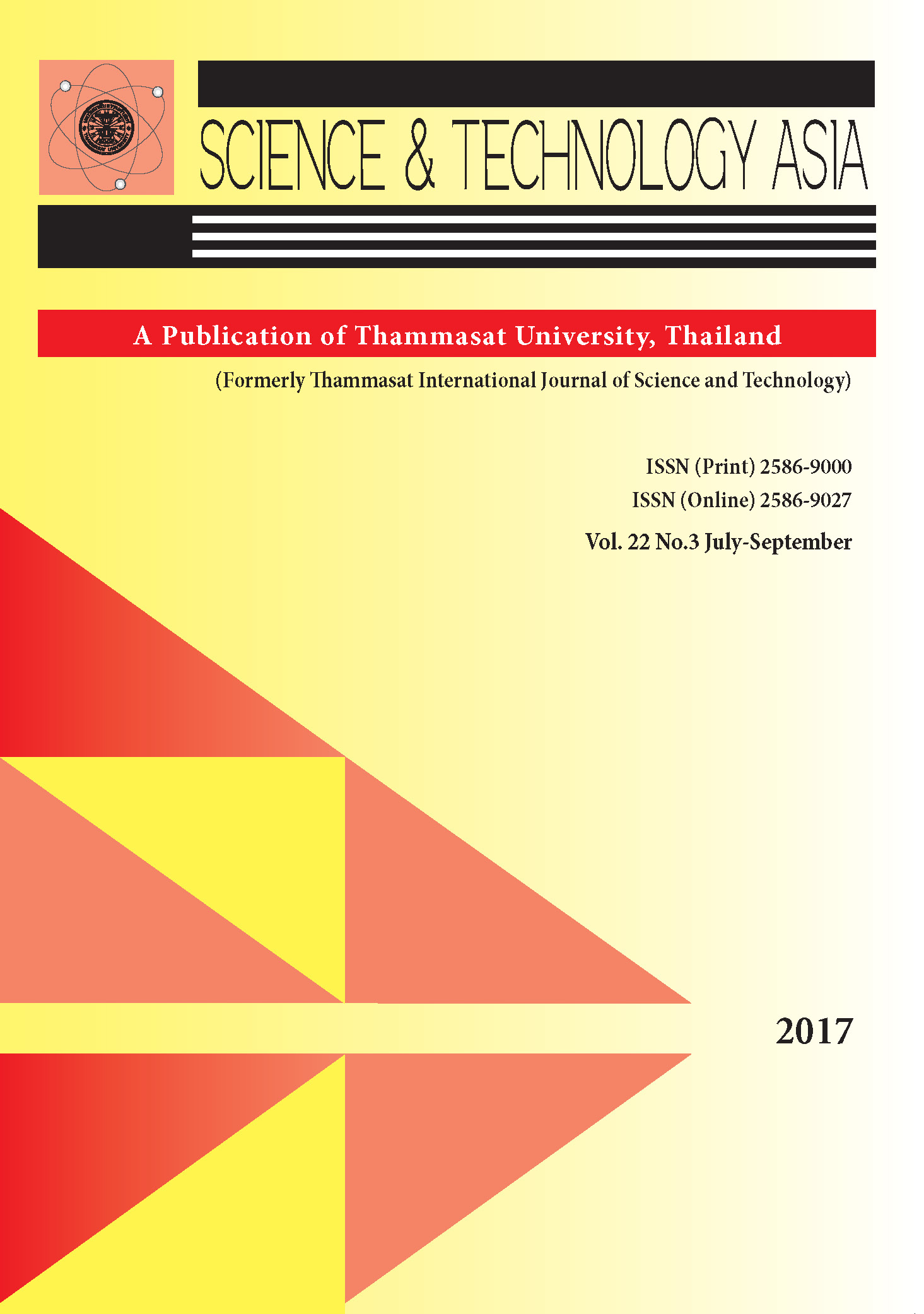Prediction Dynamic Flooding of Dam Break Using Hydrodynamic Model and Flood Assessment from Classified THEOS Images: A Case Study of Srinagarind Dam, Kanchanaburi Province
Keywords:
Prediction Dynamic Flooding, Dam Break, Hydrodynamic Model, Srinagarind Dam.Abstract
The study assumes that Srinagarind Dam of Kanchanaburi province will be collapsed by overtopping with a final breach of trapezoidal shape due to heavy rainstorm. Subsequently, various forms of demolitions and dynamic flooding are identified using Dam Break and Hydrodynamic models of MIKE 11 by applying the principle of the Probable Maximum Flood (PMF). Srinagarind dam is a rock fill dam with it is crest at +185.00 m. from Mean Sea Level (MSL) and store a maximum volume of 17,745 million m3 of water at the beginning of the break. For dynamic flooding prediction, the maximum breach outflow discharge was 11,307 m3/s with a velocity of 5.39 m/s at 62.29 hours after the break. In addition, the maximum discharge, water level and flood duration at cross sections of main rivers are also extracted for flood zone identification into 4 zones which include: at Ban Phu Thong Maeo, Wang Dong Sub-district, Mueang Kanchanaburi district, the discharge is 14,231 m3/s, the maximum water level is +56.56 m. (MSL.) at 68.28 hr. after dam failure. At Ban Nuea, Ban Nuea Sub-district, Mueang Kanchanaburi district, the discharge is 14,081 m3/s and the maximum water level is +41.59 m. (MSL.) at 83.21 hr. after dam failure. At Ban Wang Khanai, Wang Khanai Sub-district, Tha Muang district, the discharge is 13,244 m3/s and the maximum water level is +37.671 m. (MSL.) at 93.24 hr. after dam failure. At Ban Luk Kae, Ban Don Khamin Sub-district, Tha Maka District, the discharge was 12,047 m3/s, the maximum water level is +18.92 m. (MSL.) at 107.26 hours after dam failure. Land use land cover (LULC) types are affected by the flood after the dam-break which would cover an area of 1,172.21 sq.km. (1) Urban and built-up area (City, town, and commercial areas), (2) Paddy field, (3) Field crop, (4) Orchard, (5) Horticulture, (6) Pasture and farm house, (7) Evergreen forest, (8) Deciduous forest, (9) Natural water bodies (10) Reservoir (11) Rangeland, and (12) Mine and pits are included. The most affected LULC is paddy field that covers an area of 331.88 sq.km. (28.32%). The second and third largest affected LULC are rangeland and field crop areas that covered an area of 285.66 sq.km. (24.37%) and 267.02 sq.km. (22.78%). The least affected LULC is a deciduous forest that covers area of 15.49 sq.km. (1.32%).








